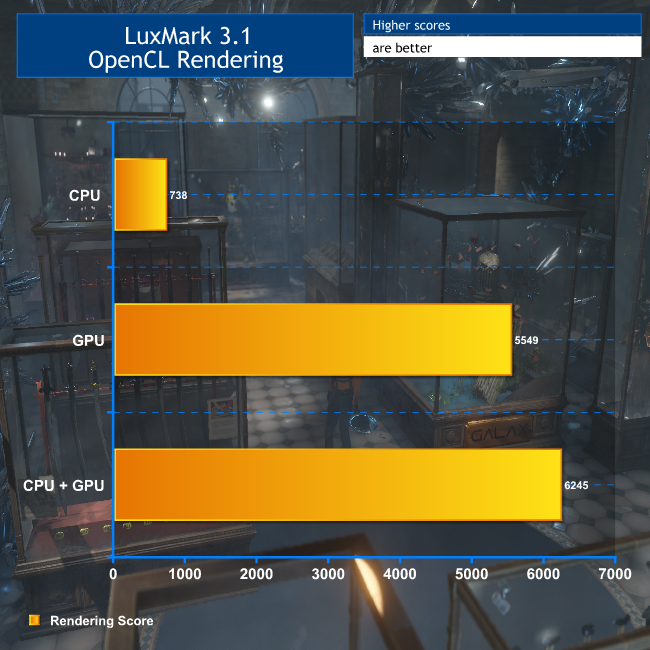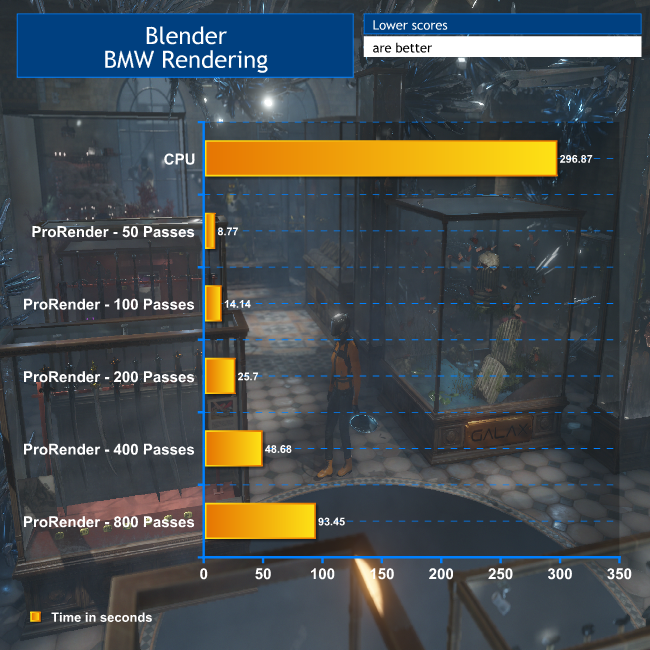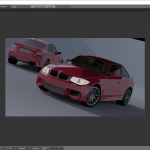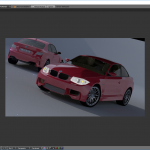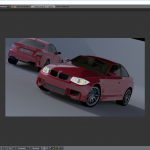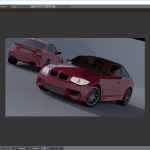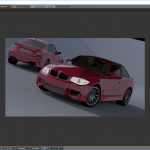OpenCL is a platform for harnessing GPU power for activities other than real-time 3D rendering to screen, also known as GPGPU. Unlike NVIDIA's CUDA platform, OpenCL is open source and can be ported to anything with processing power. So drivers are available for CPUs as well, both from Intel and AMD.
A popular tool for testing OpenCL performance is LuxMark. We haven't run this on any workstations before, so we don't have comparisons amongst our past reviews. But we have other past experience with version 3.1 of LuxMark. We ran the Sala scene on CPU only, GPU only, and then both.
It's obvious that the AMD Radeon Pro Duo has loads of OpenCL grunt available, way more than the eight cores of the AMD Ryzen 7 CPU. From previous experience elsewhere, we can also reveal that the Radeon Pro Duo's OpenCL performance is not far off what NVIDIA's Quadro P6000 can provide, and that costs over £5,000, more than five times as much.
So there's a huge amount of processing power available here, as long as you have the software to take advantage of it. Fortunately, AMD is beginning to have that covered.
LuxMark is a synthetic benchmark – it doesn't correspond directly to an application actually used in a production environment. GPGPU has shown potential for literally decades, ever since 3D graphics accelerators hit the mainstream in the 1990s.
But the concept never quite became common for 3D rendering. AMD hopes to change that with its ProRender plugin. We wanted to see how much benefit it gives, so we loaded one of the Blender demo scenes – the “Famous BMW” scene. We then rendered it with CPU only and ProRender.
The difference in performance is nothing short of staggering. Using 50 passes for ProRender, the later was 34 times quicker than just the CPU, and even when we increased the passes to 800 to improve quality, ProRender was still quicker than the CPU alone.
However, if you take a look at the screengrabs below, it will be clear that the scene doesn't look the same with the two renderers, and in fact the CPU version is better quality than the ProRender version until the number of passes go up to 400 or so.
We can't profess to being Blender experts, so not all the correct materials have been used in the ProRender version because these need to be reassigned. There are also some strange flecks that an expert could probably iron out with the right render settings.
Overall, though, since the speed gains are so enormous, the potential is clear. These kinds of gains with Cinema 4D, Maya and 3ds Max are likely to be very welcome indeed amongst serious 3D content creation professionals.
 KitGuru KitGuru.net – Tech News | Hardware News | Hardware Reviews | IOS | Mobile | Gaming | Graphics Cards
KitGuru KitGuru.net – Tech News | Hardware News | Hardware Reviews | IOS | Mobile | Gaming | Graphics Cards


